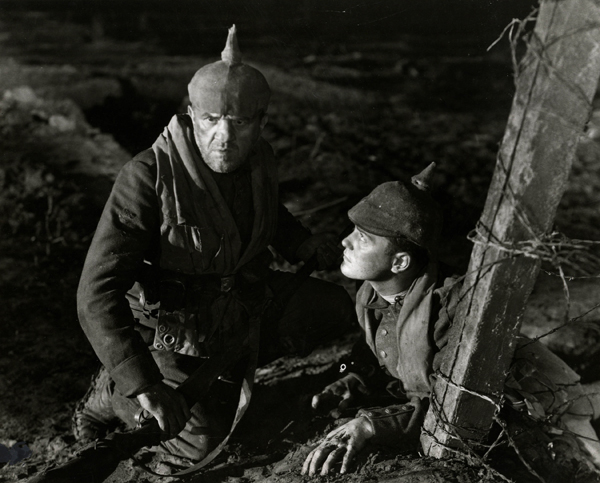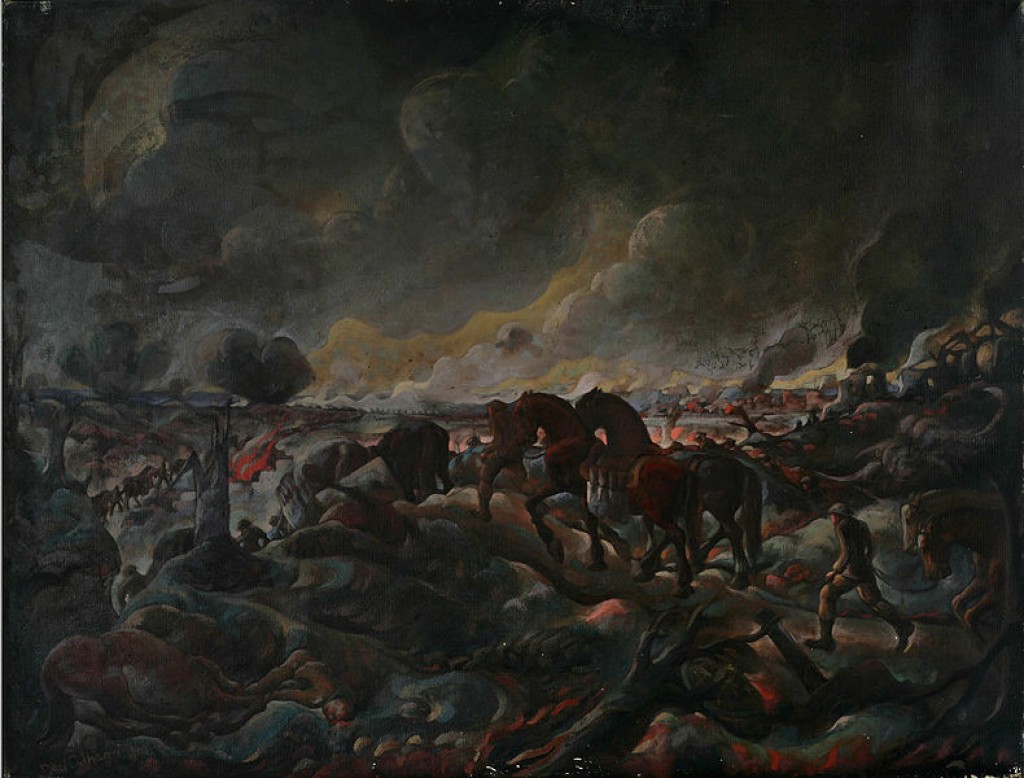The malaise of the First World War. Even staunch humanists like Thomas Mann were caught up in the jingoistic fever, the pomp and ritual of nihilism. In 1914 he asked, “Is not war a purification, a liberation, an enormous hope?” And he added, “Is not peace an element in civil corruption?”
The malaise was evident everywhere- in the new cults of political violence; in the new philosophies of men like Freud, Nietzsche and Pareto, who stressed the unconscious and the irrational, and who exposed the lying pretensions of middle-class values and pretensions; and the sense of doom the permeated the avant-garde arts of the prewar years. Something strange was lying beneath the prosperity of the times: a surfeit with peace, a lust for violence, a belief in death and an ominous mystique of war that was ripe to erupt.

—Hollywood could hardly have been more jingoistic in the period surrounding the First World War. On the movie screen, spies of many nationalities seemed to be swarming everywhere, and it is a wonder that Erich von Stroheim, the archetypal celluloid Hun, ever had time to sleep. However, by the time of King Vidor’s enormously popular The Big Parade (1925), the film industry found it safe to question whether the war was such a good idea after all. America was returning to its isolationist roots, a process hurried along by the Great Depression, resulting in President Hoover’s 1932 order that General MacArthur disperse the “Bonus Army” of disillusioned veterans. Thus, the arrival of the pacifist All Quiet on the Western Front in 1930 could not have been timelier. On top of the worldwide success of Remarque’s novel, the film made lots of money. In addition to Milestone’s directing Oscar, it won for Best Picture was nominated for screenplay and cinematography.—click image for source…
Typical of this spirit of rebellion was the manifesto set forth in 1910 by the Italian Futurist painters: it declared that “all forms of imitation should be held in contempt and that all forms of originality glorified; that we should rebel against the tyranny of the words ‘harmony’ and good taste’…;that a clean sweep be made of all stale and threadbare subject matter in order to express the vortex of modern life- a life of steel, pride, fever, and speed…”

—Douglas W. Culham – Mud Road to Passchendaele. Image courtesy of Wiki Commons—
The darker strain was there, installed and insistent on staying. blood was in the eyes. A fever was over Paris as the spring of 1914 slipped into summer. Charles Peguy- Dreyfussard, Socialist, man of good will and reason, to his intellectual generation “the pure man”- had caught this other darker spirit as well. That spring he had written:
Hereaux ceaux qui sont morts dans les grandes batailles…Happy are those who have died in great battles, Lying on the ground before the face of God…
By September of that year he himself was dead.

—First World War art: Stanley Spencer’s Travoys Arriving with Wounded at a Dressing-Station (1919)
Commissioned by the British War Memorials Committee, First World War artist Stanley Spencer chose a Macedonian dressing-station to illustrate his interpretation of wartime redemption—click image for source…
ADDENDUM:
(See link at end) John Lukacs:There was, finally, yet another difference between 1914 and 1939. The peoples of Europe swept into the First World War with frenzied enthusiasm. In September 1939 they went to war in a serious, disciplined way. The British entered the conflict with a silent determination. The Germans, who were supposed to have been whipped into fanaticism by Hitler’s propaganda, took up arms with a fatalism that was toneless rather than serene. It stood in grave contrast to their relief when Kaiser Wilhelm II had called them to war in 1914. In 1939 those Europeans who sought relief in the coming of the war were a small minority
e exception. In 1914 it was the majority that had found relief in it, almost everywhere.In 1914 most governments, and people, expected a short European war. In 1939 no one expected a short war, perhaps with the solitary exception of Hitler. In 1914 the peoples of Europe thought of another European war; only later did popular terminology make it a “World War.” In 1939 everyone knew that this was the start of the Second World War. No one knew that it was also to be the last European war. Read More:http://www.foreignaffairs.com/articles/44901/john-lukacs/the-coming-of-the-second-world-war





 COMMENTS
COMMENTS